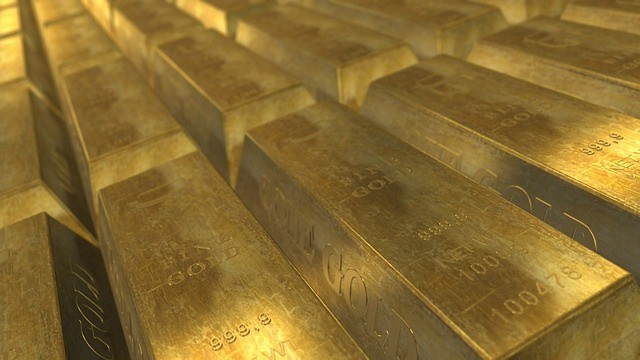The average person does not have gold at home to test its magnetic properties. Gold below 24 carats usually contains other metals for durability, making it less susceptible to scratches.
By itself, gold may exhibit minimal magnetism in the presence of strong magnetic fields, especially for everyday purposes. So, it is safe to consider gold as non-magnetic. But how about other metals?

Magnetic Vs. Non-Magnetic Metals
Pure gold alone is not magnetic. But as per Standard Magnets, it can exhibit magnetic properties when alloyed with metals like iron, zinc, copper, nickel, cadmium, aluminum, silver, platinum, and palladium. That is why gold jewelry like 18k, 14k, 10k, and white gold is potentially magnetic, influenced by temperature variations.
The magnetic properties of magnets stem from the alignment of electrons within their molecules. In permanent magnets, electrons spin in the same direction, leading to the north and south poles. Opposite poles attract, while like poles repel, generating a magnetic force and creating a magnetic field surrounding the magnet.
When magnetic substances are placed near a magnet, they stick to it due to their paramagnetic properties. Spending time in a strong magnetic field temporarily magnetizes these materials, enabling them to attract other substances. Magnets only attract materials with similar magnetic properties, such as metals with unpaired electrons spinning in the same direction, while non-magnetic materials like paper, plastics, and wood lack these characteristics.
Gold, being the most electronegative metal, possesses unpaired electrons in its valence shell, but since these electrons are shared among atoms in metallic gold, it does not exhibit classical magnetism and is considered diamagnetic, weakly repelling a magnet due to the absence of unpaired electrons at the atomic level.
Several metals, including iron, nickel, cobalt, rare-earth metals, and stainless steel, are magnetic and can be attracted to permanent magnets. Almost all magnetic materials are metals, but zinc becomes magnetic temporarily in a strong magnetic field.
On the other hand, gold is diamagnetic, displaying only weak repulsion toward magnets, while aluminum, silver, and copper are non-magnetic due to their crystal structure. Copper, though non-magnetic, is useful for conducting and generating electricity.
Why Gold Is an Amazing Metal
Gold holds diverse significance for people, serving as a precious metal in jewelry for its luster and allure, while others recognize it as a vital wonder material integral to modern life. Here are some of its distinctive properties and applications that will help people appreciate it more according to an article in Medium.
Conductivity
Gold is an excellent conductor of heat and electricity, and while silver has the highest thermal conductivity and light reflectance among precious materials, gold's superior corrosion resistance and malleability make it a preferred choice for long-lasting electrical connectors in various devices.
Reactivity
Gold is highly unreactive and does not rust or corrode, except when dissolved by aqua regia; it slowly reacts with halogens. Its excellent resistance to acids and bases, along with its ability to reflect various electromagnetic energies, make gold a versatile material for diverse industries.
It is commonly used in aerospace applications for protective coatings. As a refinery, dealing with various forms of gold, the use of different assays helps authenticate the melt value of customer submissions.
Plasticity
Gold is a soft yellow metal with a stunning lustrous sheen, being the most malleable and ductile element that can be rolled into thin sheets and pulled into fine wires, making it resemble the Play-Doh of metals.
RELATED ARTICLE: Gold Mysteriously Concentrates Around Arsenic, and Scientists Finally Understand Why
Check out more news and information on Chemistry in Science Times.












